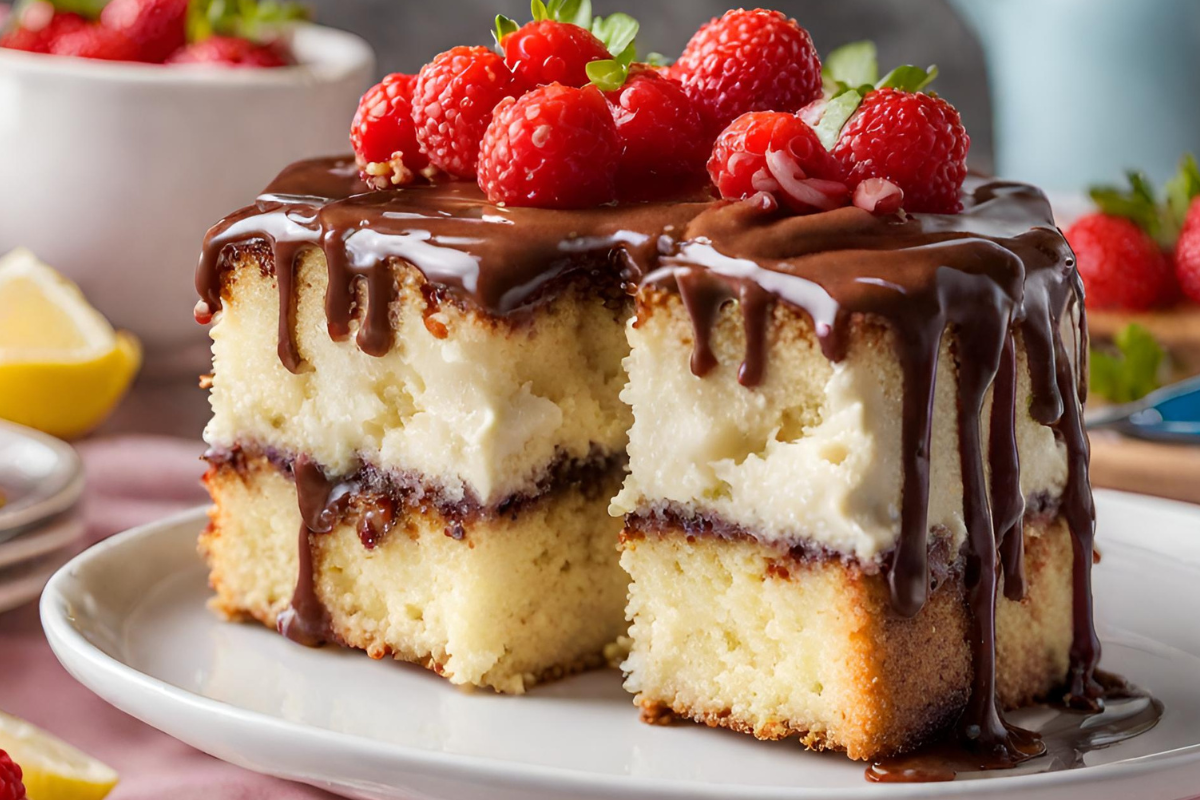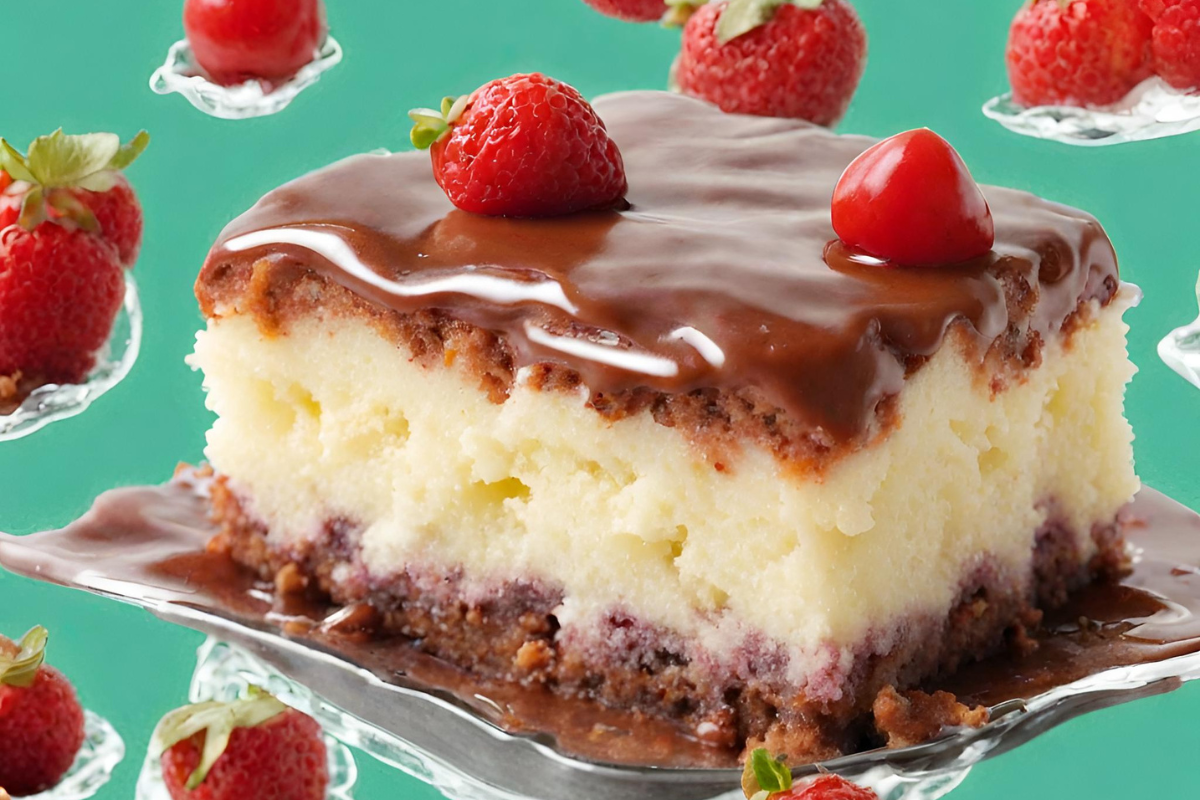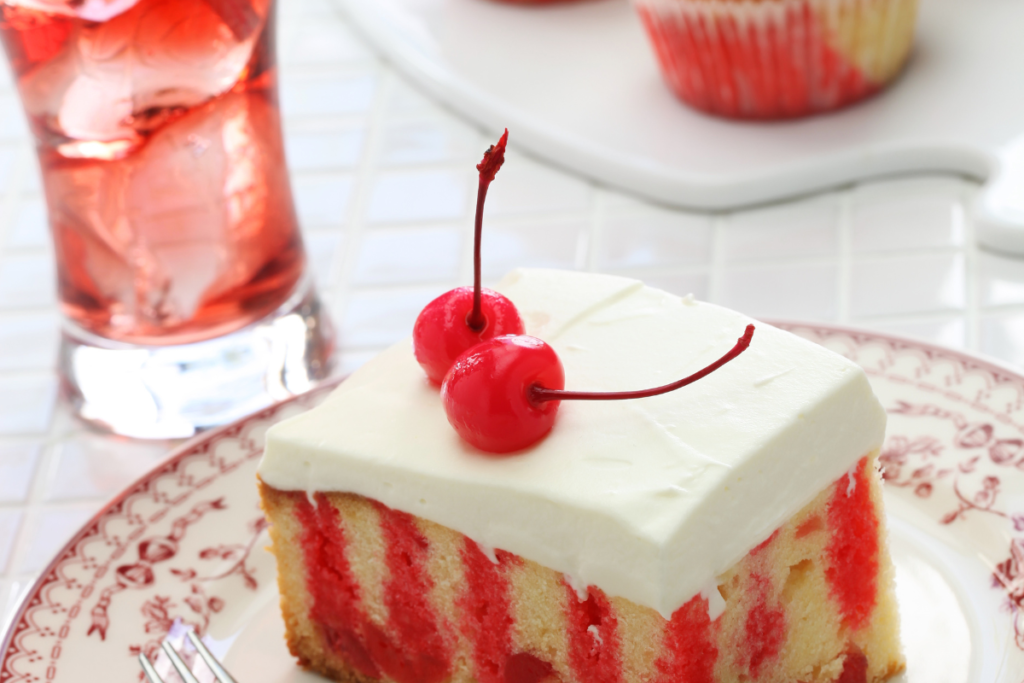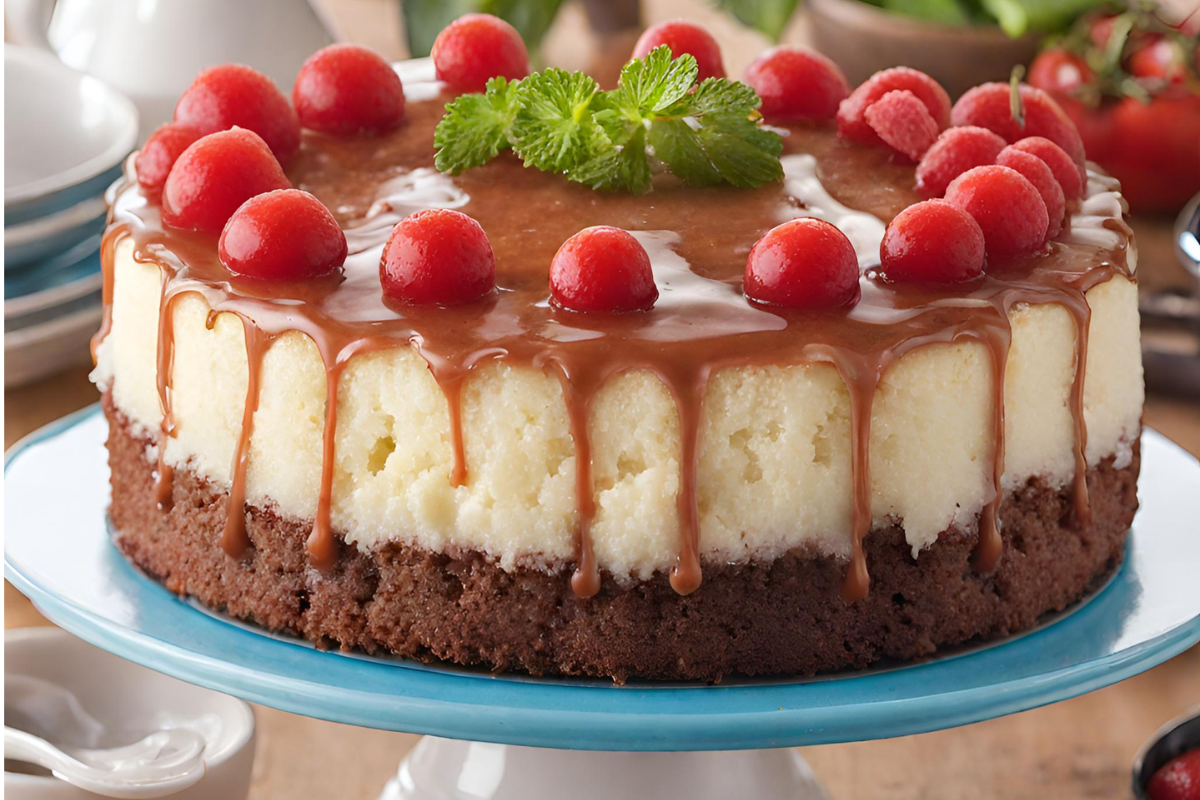Understanding Poke Cake: An Introduction
Ah, the perfect poke cake, a dessert that promises a riot of flavors with every bite, has become a beloved staple at gatherings, potlucks, and family dinners. But, as many a home baker has discovered, the path to poke cake perfection is laden with the potential for a soggy disaster. So, what gives? Why does this dessert, known for its delightful moistness, sometimes end up more like a mushy mess than a delectable treat?
The answer, my fellow baking enthusiasts, is not as elusive as it might seem. In fact, it boils down to a few key factors that, when overlooked, can turn your culinary masterpiece into a soggy sorrow. But fear not! We’re here to dissect these factors, offering you the wisdom needed to navigate the baking process with finesse.
From the importance of baking times to the selection of the right fillings, and the crucial cooling and soaking techniques, we’ll cover all the bases. By the end of this article, you’ll be equipped with the knowledge to ensure your poke cake is the talk of the table for all the right reasons. So, let’s turn those baking blunders into a thing of the past and embark on a journey to poke cake perfection!
For those interested in a specific variation, consider exploring our Boston Cream Poke Cake Guide, which dives deep into crafting this classic dessert with a twist.
Before the First Step: “Achieving baking success requires more than just following a recipe; it demands precision and passion.

Common Reasons for Sogginess
Embarking on the journey to create the perfect poke cake can sometimes lead to unexpected detours, especially when faced with the common conundrum of sogginess. This culinary pitfall can turn what should be a delightful dessert into a disappointing, mushy mess. But what exactly leads to this soggy outcome? Understanding the root causes is the first step in avoiding them and ensuring your poke cake is as delectable as intended.
In Part 2 of our comprehensive guide, we delve into the common reasons for sogginess in poke cakes. This section is designed to illuminate the baking blunders and missteps that can lead to a less-than-ideal texture. From the nuances of baking time to the intricacies of ingredient interactions, we’ll explore the critical factors that influence the outcome of your cake. Armed with this knowledge, you’ll be better equipped to navigate the baking process, making informed decisions that lead to a perfectly moist, never soggy, poke cake. Let’s uncover the secrets to sidestepping sogginess and pave the way for poke cake perfection.
Identifying the Culprits Behind a Soggy Poke Cake
Insufficient Baking Time
One of the primary suspects in failing to achieve a perfect poke cake is, quite simply, not baking it long enough. It’s a common oversight, with many a baker being fooled by the deceptive golden hue of the cake’s edges, only to find the center hasn’t had enough time to fully set. The center of the cake is the last to cook through, so patience is key. A toothpick test can be your best friend here; if it comes out clean from the center, your cake is ready to step out of the oven and into the spotlight.
The journey to a perfect poke cake also involves mastering the art of choosing and applying fillings.
Overly Liquidy Fillings

Ah, the thrill of pouring a deliciously sweet filling over your freshly baked cake! But here’s where restraint must play its part. An overly enthusiastic amount of filling can drown your cake, leaving it swimming in a sea of sogginess. The trick is to find that sweet spot – enough filling to permeate the cake and add flavor, but not so much that it compromises the cake’s structure. Think of it as dressing a salad; you want it coated, not soaked.
For those looking to perfect their filling technique, our article on Boston Cream Filling: Legacy and Recipe provides insights into creating the perfect balance between flavor and texture.
Incorrect Cooling and Soaking Times
Rushing the cooling process or being too hasty with adding your filling can also lead to a less-than-ideal texture. A cake that’s still warm is more susceptible to absorbing too much liquid, leading to a soggy bottom nobody appreciates. Allow your cake to cool completely before introducing it to its liquid companion. This patience will pay off in the form of a perfectly moist, yet structurally sound, poke cake.
By keeping these common missteps in mind and adjusting your baking approach accordingly, you’re well on your way to avoiding the dreaded soggy poke cake scenario. Remember, baking is as much about the journey as it is about the destination. So, take your time, measure your ingredients and temperatures with care, and soon, you’ll be serving up a poke cake that’s just right – moist, flavorful, and with not a hint of sogginess in sight.
Tips to Prevent a Soggy Poke Cake
Navigating the world of perfect poke cakes can sometimes feel like walking a delicious, yet delicate, tightrope. The goal? Achieving that perfect harmony between a moist, flavorful cake and avoiding the dreaded soggy bottom. It’s a culinary challenge that many bakers face, but fear not! With the right techniques and a sprinkle of baking wisdom, you can ensure your poke cake is the star of the show, boasting the ideal texture and taste that will have everyone asking for seconds.
In Part 3 of our guide, we’re diving deep into the art and science of preventing a soggy poke cake. Whether you’re a seasoned baker or just starting to explore the joys of baking, these tips will arm you with the knowledge you need to create a poke cake that’s perfectly moist, without being overly wet. From the importance of baking times to the selection of fillings and the crucial cooling process, we’ve got you covered. So, preheat your ovens and get ready to bake with confidence as we explore expert tips for crafting the perfect poke cake.
Expert Tips for a Perfect Poke Cake
So, to ensure your baking success, start by preheating your oven to the right temperature, a crucial first step in any baking endeavor.

The Right Baking Time
Timing in baking is not just important; it’s everything. To avoid underbaking, which is a common cause of sogginess, use an oven thermometer to ensure your oven’s temperature is accurate. Then, bake your cake until a skewer inserted into the center comes out clean. Remember, ovens can be temperamental, so what works for one might not work for another. Keep an eye on your cake and adjust the baking time as needed.
Choosing the Right Fillings
Not all fillings are created equal, especially when it comes to poke cakes. Opt for thicker, more viscous fillings that won’t overly saturate your cake. Jellies, thick custards, and condensed milk are excellent choices. They seep into the poked holes just enough to flavor the cake without overwhelming its texture. Think of it as dressing your cake in a coat that’s warm and inviting, not one that’s too heavy and burdensome.
Proper Cooling and Soaking Techniques
Cooling is crucial. A cake that’s too warm will absorb fillings like a sponge, leading to sogginess. Better Homes & Gardens emphasizes the importance of cooling and adding fillings correctly to avoid a soggy bottom. Let your cake cool completely on a wire rack, allowing air to circulate and speed up the cooling process. When it’s time to add your filling, do so gradually. Pour a little, then give it time to soak in before adding more. This method ensures the filling is evenly distributed, enhancing the cake’s flavor without compromising its texture.
By embracing these tips, your poke cake will be the highlight of any dining table. It’s about balancing flavors and textures, ensuring each bite is a harmonious blend of moist cake and delectable filling. So, go ahead, experiment with your fillings, watch your baking times, and remember to let your cake cool. Your reward will be a poke cake that’s just right, earning you the title of poke cake maestro among your friends and family.
FAQs
Diving into the world of poke cakes can bring up a lot of questions. Whether you’re a seasoned baker or new to this delightful dessert, there are always new tips and tricks to learn. Let’s tackle some of the most frequently asked questions to ensure your poke cake journey is as smooth and satisfying as the cake itself.
Frequently Asked Questions
How do I know if my poke cake is done?
Knowing when your poke cake is perfectly baked is crucial to avoid sogginess. The Typical Mom offers insights on using a wide straw or spoon for the perfect poke cake test. The tried-and-true method is the toothpick test. Insert a toothpick into the center of the cake; if it comes out clean, your cake is done. Also, pay attention to the cake’s edges pulling slightly away from the pan – it’s a good sign that it’s ready to come out of the oven.
Can I make a poke cake in advance?
Absolutely! Poke cakes are actually ideal for making ahead of time. The resting period allows the fillings to thoroughly soak into the cake, enhancing the flavors and texture. For best results, make your poke cake at least a day in advance. Just be sure to cover it and store it in the refrigerator until you’re ready to serve.
What are the best fillings for a poke cake?
The beauty of poke cakes lies in their versatility. For fillings, think beyond the traditional sweetened condensed milk. Lil’ Luna’s Jello Poke Cake recipe can inspire you with its unique and flavorful filling options. Fruit purees, flavored gelatins, and even chocolate ganache can add a unique twist to your cake. The key is to choose a filling that complements the cake flavor and has the right consistency to soak into the holes without making the cake too wet.
By keeping these FAQs in mind, you’re well-equipped to tackle any poke cake project. Remember, the secret to a perfect poke cake lies not just in the recipe but in the technique and a bit of creativity. So, don’t be afraid to experiment with different fillings and flavors. The more you play, the more you’ll learn, and the better your poke cakes will become.
Conclusion

With your oven preheated and ingredients prepared, step into the kitchen with confidence, ready to embark on a path to baking success.





